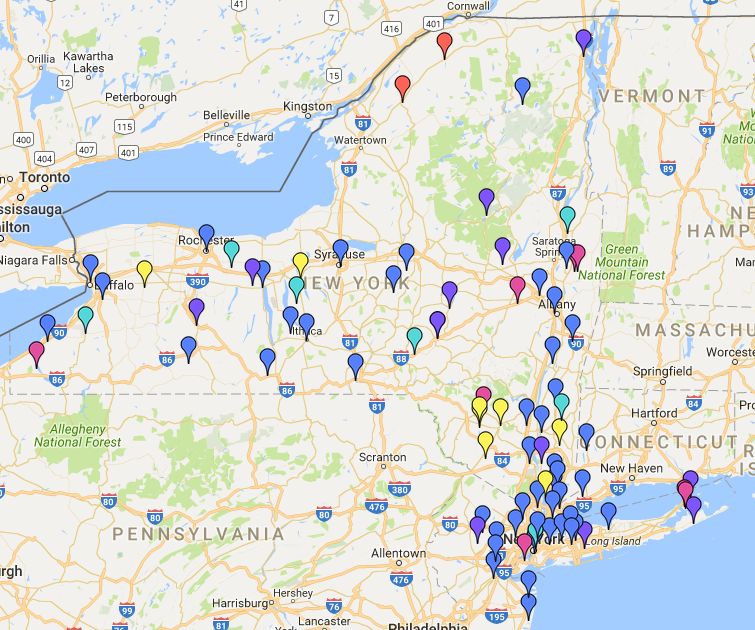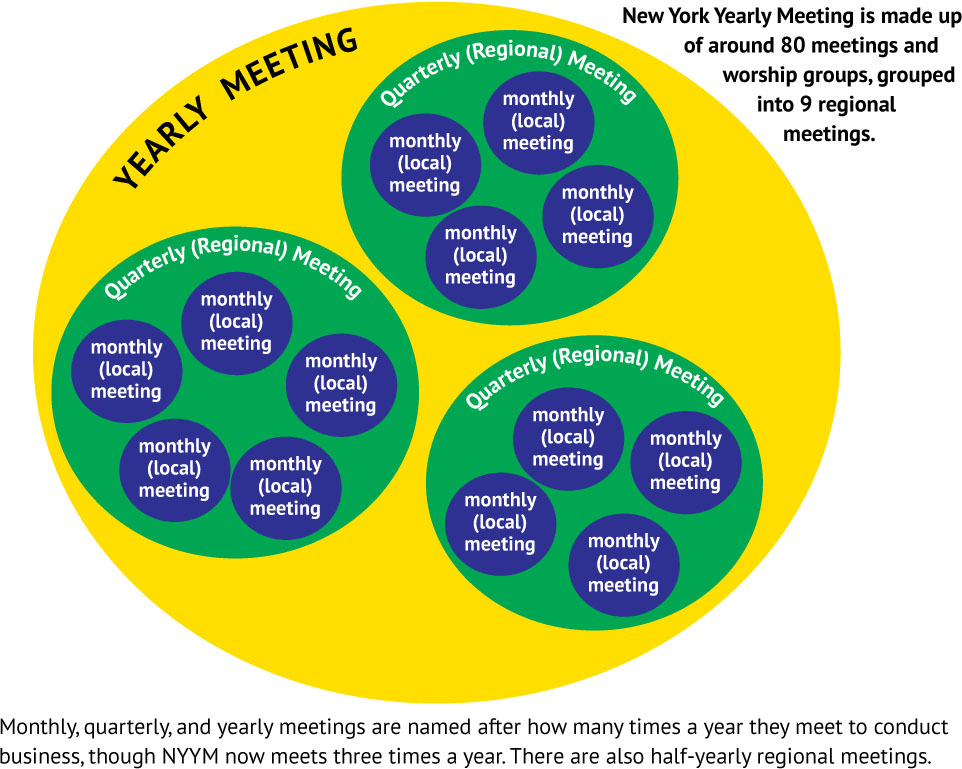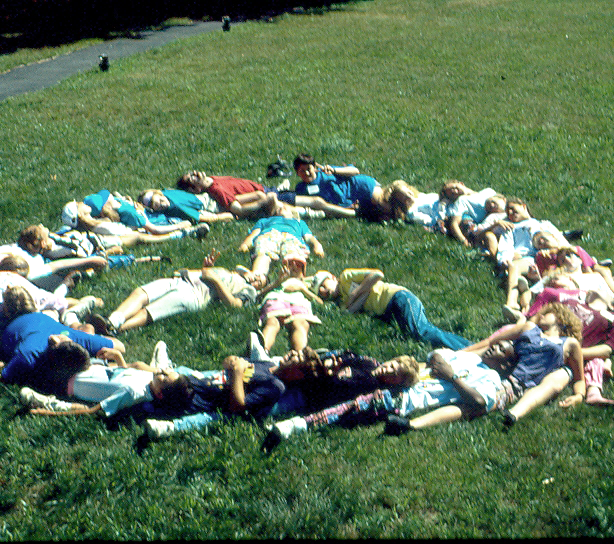George Fox, born the son of a weaver in Leicestershire, England, like others found little to sustain him in contemporary religion. At the age of 19, he began his search for truth and founded a movement that before his death in 1691 numbered over 50,000 members in England alone.
Fox had little formal education but possessed a fertile and active mind. As a youth, he suffered from what he called a “temptation to despair,” even of his faith in God. In this spiritual condition he received no help from those clergy he consulted. After several years of seeking and great inward crisis, he received the first of many inner, spiritual illuminations, which he referred to as “openings.” He wrote of this experience, one that proved to be the turning point in his search:
When all my hopes in them [the clergy] and in all men, were gone, so that I had nothing outwardly to help me, nor could I tell what to do, then, O! then I heard a voice which said, “There is one, even Christ Jesus, that can speak to thy condition,” and when I heard it, my heart did leap for joy.
This was first-hand religious experience like Paul’s vision and experience of Christ 1,600 years earlier.
Periods of depression still tempted Fox, but less often. His openings led him in a very personal, direct way into a new life. He reported one of these revelations:
I saw the infinite love of God. I saw also that there was an ocean of darkness and death; and an infinite ocean of light and love, which flowed over the ocean of darkness. In that also I saw the infinite love of God.
Another opening showed him
That every man was enlightened by the Divine Light of Christ ... and that they that believed in it came out of condemnation and came into the Light of Life, and became children of it.
Through these experiences Fox received his life’s mission, one centered in the living Christ. In the Old Testament, Fox had read of the prophets’ expectation of Christ, and in the New Testament, he had learned of Christ’s historical appearance. Now that which he had known by report became his own experience. He knew the Christ Within; he became Christ’s disciple. He had come to know the same Spirit that those who wrote the Bible had known:
For though I read the Scriptures that spoke of Christ and of God, yet I knew him not, but by revelation, as He who hath the key did open, and as the Father of life drew me to His Son by His Spirit.
This divine Spirit, this Inward Light, was both illumination and inspiration, a voice to be heard and obeyed. Looking back upon his own experience, Fox declared that anyone who has not experienced the Light stands in darkness, regardless of creed or moral righteousness. He preached that Christ had come to teach his people himself.
The mission to which he was called and upon which he entered in the year 1647 was, he wrote, “to turn people to that Inward Light, Spirit, and grace, by which all might know their salvation and their way to God—even that Divine Spirit which would lead them into all truth.” His earliest associates were called Children of the Light. “I was sent to turn people away from darkness to the light that they might receive Christ Jesus; for, to as many as should receive him in this light, I saw that he would give power to become sons of God; which power I had obtained by receiving Christ.”
The salvation to which he was calling others was not simply for individuals, just as it was not simply a matter of subjective feeling. He inspired a community that heard and obeyed the voice of God and would be “renewed up again in God’s image.” He saw his mission as one of Christian renewal in a time of falling away from truth and obedience. He drew his fellow believers from the dissenting sects, the Seekers, and the established church—wherever he found listeners “tender,” as he said. They were concerned to live the implications of their faith and testified against war, church taxes, hat honor, the language of privilege and flattery, the use of oaths, and price-bargaining.
Fox’s concept of “that of God in every person” was radical in its day not only for sweeping away distinctions of social class, wealth, and race, but for including women fully in the religious and social community as equals. In a time when there was serious argument over whether women had souls, Fox quoted the words of Mary, “My soul doth magnify the Lord, and my spirit hath rejoiced in God, my Saviour.” How could Mary speak thus, he reasoned, if she had no soul? He believed that the dominion of men over women was a result of the fall, but Christ had brought restoration of a “new Eden” where women and men were again equal and “helpsmeet.” Because women possessed the Inward Christ just as did men, they had equal measure of the gifts of prophecy and the ability to preach. Many women were drawn to Fox’s new movement, and early women Friends, imbued with a sense of participation in that which is holy, and freed and encouraged by their communities and families, developed their gifts in the ministry, often traveling, alone or in pairs, over great distances and sometimes at great risk, to preach, to teach, and to establish meetings.
Early Friends owed much to the enthusiasm, encouragement, spiritual insight, and organizational gifts of Margaret Fell. Born in Lancashire, England, she was a devoted Christian, yet restless and spiritually dissatisfied with the Anglican church she had long attended. On first hearing Fox preach in 1652 she found that his message spoke clearly to her condition. She believed with utter conviction that God’s truth was opening the way for the creation of a new religious experience. Her husband, Thomas Fell, a judge of the Assizes, offered their home, Swarthmoor Hall, for meetings for worship. She made it a haven for those persecuted and suffering for their Quaker beliefs and the center of early efforts to provide encouragement and organized support for traveling ministers. She helped establish the Kendal Fund (1654) to provide early Quaker missionaries with basic necessities. The fund was later expanded to include financial aid to prisoners (who were being charged for their beds), the printing of books, and aid to meetings in their hospitality to visiting Friends. In 1669, eleven years after Thomas Fell’s death, Margaret Fell and George Fox married, and together they devoted themselves to the nurture of her children and the organization of the Society of Friends.
In October 1668, after the end of Margaret Fell’s imprisonment in Lancaster for holding meetings for worship in her house, the Swarthmoor women’s monthly meeting met for the first time. Separate monthly, quarterly, and yearly meetings for women eventually came into being throughout the Society. The practice, encouraged by George Fox and other men Friends, lasted into the twentieth century and was a means for women’s social education as well as a considered and careful way for Friends to listen to God’s leadings.
Margaret and her daughters wrote detailed instructions for conducting business meetings. They also organized Friends’ marriage procedure: while family and community approval and support were considered vital to marriage, the partners gave themselves to one another; the woman was not “given” by her father, as though a possession of which he had the right to dispose.





